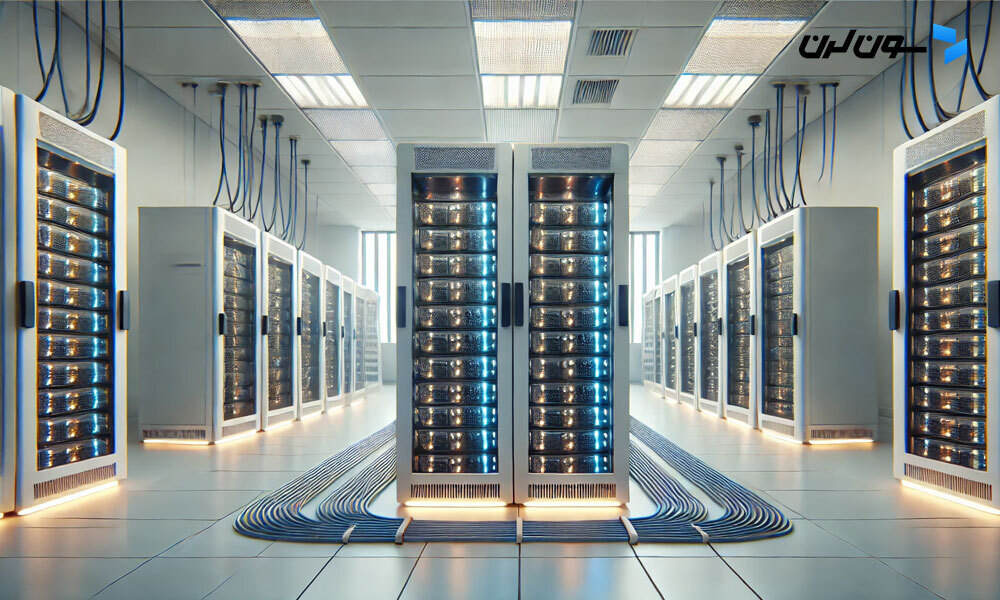Have you ever thought about how we can access information in every corner of the world with a simple click? Or how can you play online with your friends in another country from home, or participate in a video meeting? All this is possible thanks to computer networks. These networks work like magic and connect the world. But behind this digital magic, there is a complex and interesting world of technology whose job is to create these connections.
If you want to know how computer networks work, what components they have and why they are so important in today’s world, this article is written for you. By reading this text, you will not only open your eyes to this fascinating technology, but you will also learn how to manage a network better and get the most out of it.
Now let’s start and travel together to the world of computer networks!
What are computer networks?
Look, computer networks or networking in simple language means connecting two or more devices to each other. These devices can be computers, mobile phones, routers or even different applications. When these are connected, they can share information and resources with each other.
Now, this connecting and talking of devices has a rule and rules that are called communication protocols. These protocols determine how data should be transferred from one side to the other; Now either through cable and wire or through Wi-Fi and wireless.
But in the old days, when today’s networks did not exist yet, if they wanted to transfer information from one computer to another, they had to literally move the computers! Imagine how hard it was when computers were like a big and heavy piece of stone. In order to reduce this problem, especially for government employees, in the late 1960s, the US Department of Defense decided to launch the first computer network, which was later named ARPANET.
Since then, computer networks have developed a lot. Now computer networks have become such that without them, many of the daily tasks we are used to are not possible. For example, the Internet, Google search, sending emails, watching online videos, online shopping and even posting stories on Instagram, all of them are thanks to these computer networks. To summarize, if it were not for computer networks, our world would not have all of these conveniences and entertainment.
The main components of computer networks
To put it simply, a computer network consists of two basic parts: network devices (which are also called nodes) and links . Links are responsible for connecting two or more nodes. How these links move information is determined by communication protocols . Devices that send or receive data are usually known as ports .
1. Network devices
Network devices or nodes are the devices that must be connected to each other in the network. Now let’s review some examples of these devices:
- Computers, mobiles and other consumer devices: these are the devices that we use directly. For example, when you send an email, it is sent through the email program on your laptop or mobile phone.
- Servers: Servers are where the main operations and data storage are done. Whenever you have a request for a specific task or access to information, it reaches the servers.
- Routers: Routers are responsible for choosing the best path for data transfer in the network. These devices move data packets between different networks to reach the final destination and make large networks more efficient.
- Switches: Switches are like multipaths that allow multiple network devices to communicate with each other. By connecting several data cables to the switch, you can establish communication between several devices.
- Gateways: Gateways act as gateways between two different networks. These gateways can be firewalls, routers or even servers.
2. links
Links are the paths through which data is transmitted. These links have two types:
- Wired: In this method, various cables are used such as coaxial cable, telephone lines, twisted pair cables and optical fiber. Optical fiber transmits data with light pulses.
- Wireless: These types of links use radio waves or electromagnetic signals to communicate. We call this type of transmission wireless . Famous examples of this method include communication satellites, mobile networks and Wi-Fi technologies.
3. Communication protocols
Communication protocols are the rules and standards that all nodes must follow to transmit information. Some examples of these protocols include the following:
- TCP/IP: This protocol is a standard model for communication in modern networks, which has four layers:
○ Network access layer: which determines how data is physically transmitted.
○ Internet layer: which is responsible for packaging and sending data.
○ Transport layer: which helps to keep communication between devices stable.
○ Application layer: which determines how applications can use the network.
- IEEE802: It is a set of standards for local area networks (LAN) and metropolitan area networks (MAN). Wi-Fi is also a famous member of this family that we are all familiar with.
4. Network defense
All these nodes, links and protocols form the foundations of a network, but a modern network cannot function properly without defense against threats. In a world where a huge amount of data is transferred and processed every day, network security is very important. Some examples of network defense tools include firewalls , intrusion detection systems (IDS), intrusion prevention systems (IPS), network access control (NAC), content filters, proxy servers, anti-DDoS devices, and load balancing.
As such, these components and protocols allow computer networks to securely and efficiently transfer information and protect our digital world.
How do computer networks work?

We can consider computer networks as a big city with many streets and roads. Nods are the cars that move in these streets. Machines can be modems, hubs, switches and other devices that are responsible for data transport.

